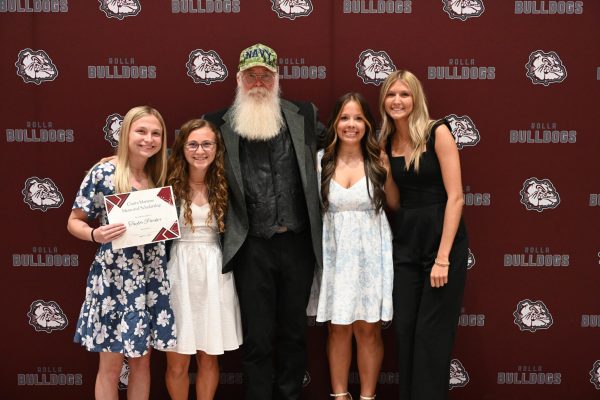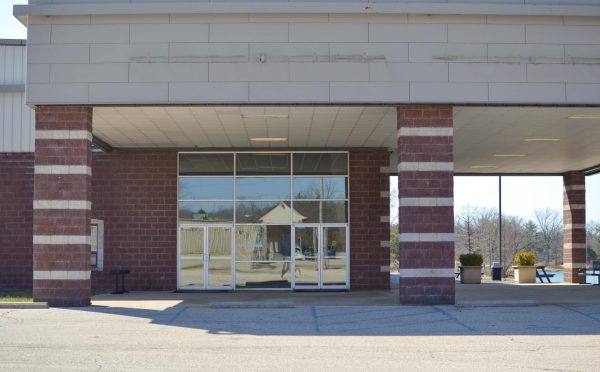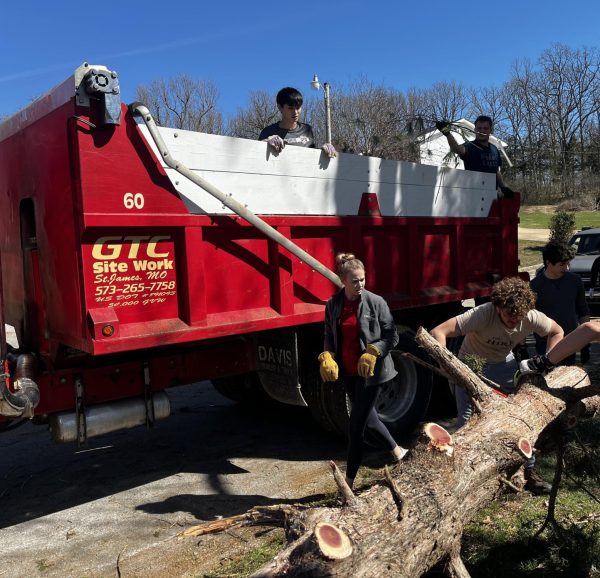Backpack program feeds 450
It is difficult to estimate just how much a teenager eats in a week. Some teenagers might have a small breakfast, bring their lunch to school or get food from the cafeteria, have a snack after school, and then eat a larger dinner. Some eat even more frequently due to sports. Then, on the weekends, you might eat out with your friends, or snack frequently. And while ramen noodles, granola bars, a juice box, a can of soup or fruit snacks might be something to hold you over for a few hours, it’s all some kids have to get through an entire weekend.
Thanks to the efforts of Faith Barnes, the executive director of the organization, Hope Alliance, who is dedicated to helping those in the community who struggle financially, kids in the school district who struggle with not having enough food to eat are ensured they will have enough to get through the weekend. This is the Friday Backpack Program, something schools from many districts are implementing.
“We pack about 450 bags a week and then give those out to students on Fridays. Some of [these students] are on the free or reduced breakfasts and lunches, and so this really helps them get over that gap for the weekend. During the weekend time they really don’t have that extra help, so this is just really to help provide extra nutrition and food for them,” Barnes said.
The idea of starting a Backpack Program came from a little boy, who went to the nurse’s office one day to get some crackers. He brought his empty backpack and kept asking the nurse for more food. When she couldn’t provide him with what he wanted, they found out that his old school had a Backpack Program, and decided to start one in Rolla.
“I read about it online. It was from a nurse’s perspective. She had a child that was in her office with his head down. She asked what was wrong, and he said, ‘I need some crackers,’ so she gave him some, but he said, ‘No, I need more to take home.’ The nurse said, ‘I’m sorry, this is all I have,’ and the little boy broke down in tears showing her his backpack. She did some research the following Monday and found out he was a transfer student from a school that had a backpack program, and so she’s like, ‘Oh, we have to start one here!’ and so they did. The story just broke my heart, and so I started one here,” Barnes said.
The program works through a local effort. Donations from Mercy hospital, PCRMC, as well as other places keep the program going. It is all through the community. Nobody gets paid and everyone is a volunteer. Service clubs, businesses, and little donations here and there have made what the Backpack Program is today.
“I’m just glad that we’re here to help. It’s a grassroots effort, no one gets paid, everyone’s a volunteer…the money comes from the community, from businesses, from service clubs like Kiwanis and Rotary, and then we get a couple [donations] from Wal- mart and Mercy Hospital…PCRM has donated too. So its really just a local effort. I’ve been blessed…I’ve been amazed at the volunteers; at the amount of people that turn out,” Barnes said.
The program has not only provided these kids with extra food; it has increased attentiveness and positive behavior during school. With the program, the kids stay longer in the classrooms and don’t have to worry as much about not having anything to eat when they get home. However, because these kids are now sitting for longer periods of time without food, they tend to have to still go to the nurse for the occasional stomach aches and headaches.
“[The Backpack Program has] made a huge difference. From the first year to the second, we did some statistics at the nurse’s office and she said there was an 80 percent decrease in office visits, so these kids are in the classroom much longer. Because they do [get sent to the office], they have the stomach aches, they have headaches, they’re nervous, they’re anxious, because they know when they go home they’re not going to have something to eat. One little kid said he was so happy because he normally eats bread for dinner. So this gives them a little bit of variety, a little bit of hope,” Barnes said.
This is the program’s seventh year in the Rolla School District. Barnes started it with her husband, but gained volunteers as the program grew.
“We started off doing 14 backpacks and we thought that was a lot, but by the end of that school year we were doing 49. It was just me and my husband, and we thought it took forever to do it, and now we’re up to 450,” Barnes said.
The program has received very positive feedback from children and parents. Surveys are sent out to parents at the end of each year for evaluation of the program and to make any necessary changes.
“At the end of the year, we ask parents how [the program] was, and we get so many comments saying [things like] ‘thank you so much, this is the nicest thing anyone has ever done for us,’ and ‘It’s been very helpful for us,’” Barnes said.
The program helps provide these children with food, but it also teaches them about character and service. Because of this program, not only are children provided with enough food, but other children get the chance to be a part of something great. They learn what it means to give and to see how much of an impact one little action or donation can make.
“[Another] child brought back a jar of peanut butter, gave it to the school counselor, and said, ‘I want to donate this to the backpack program.’ So we’re not only feeding their stomachs, but we’re feeding their souls- he’s learning about charity and giving back,” Barnes said.






